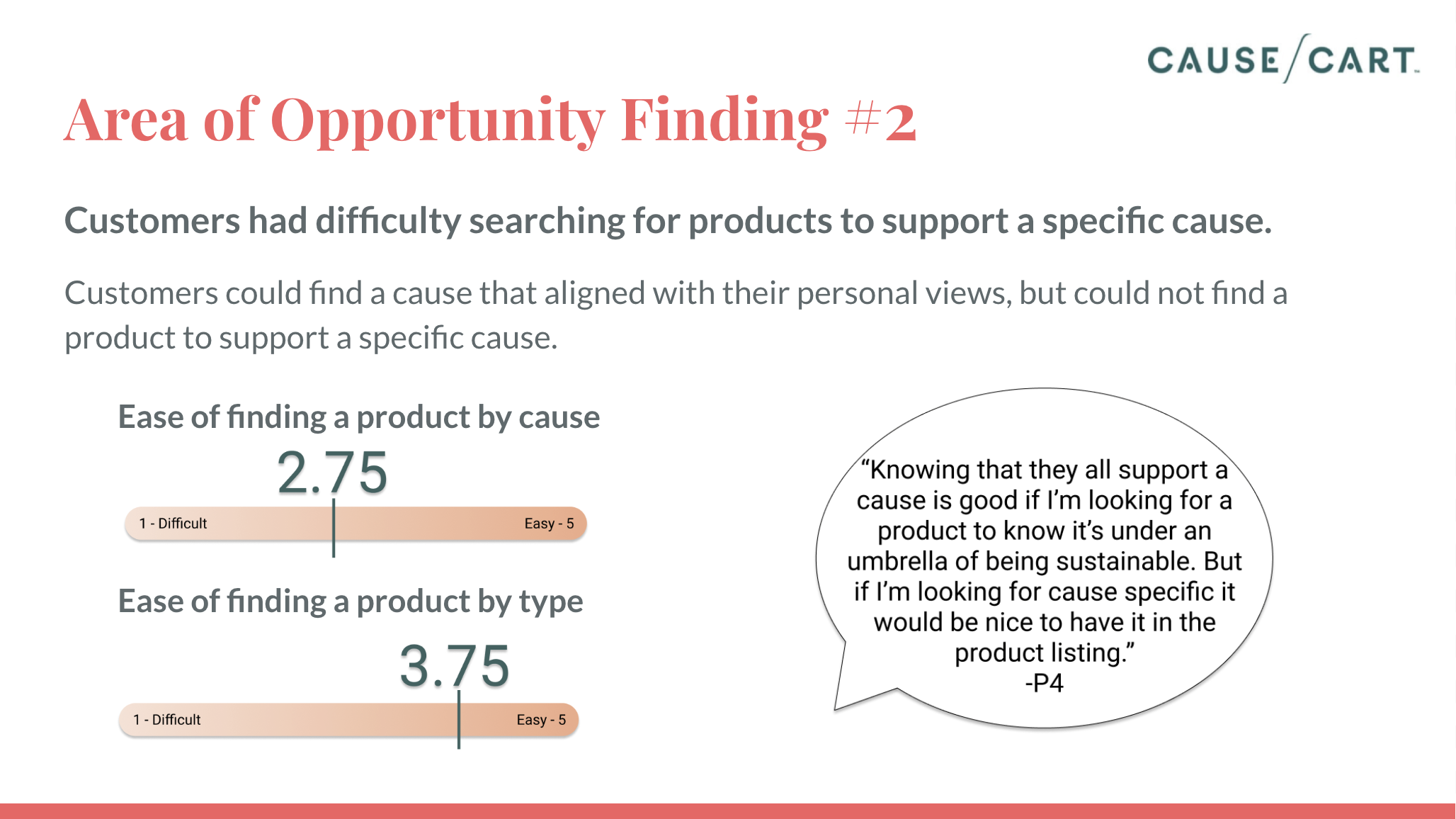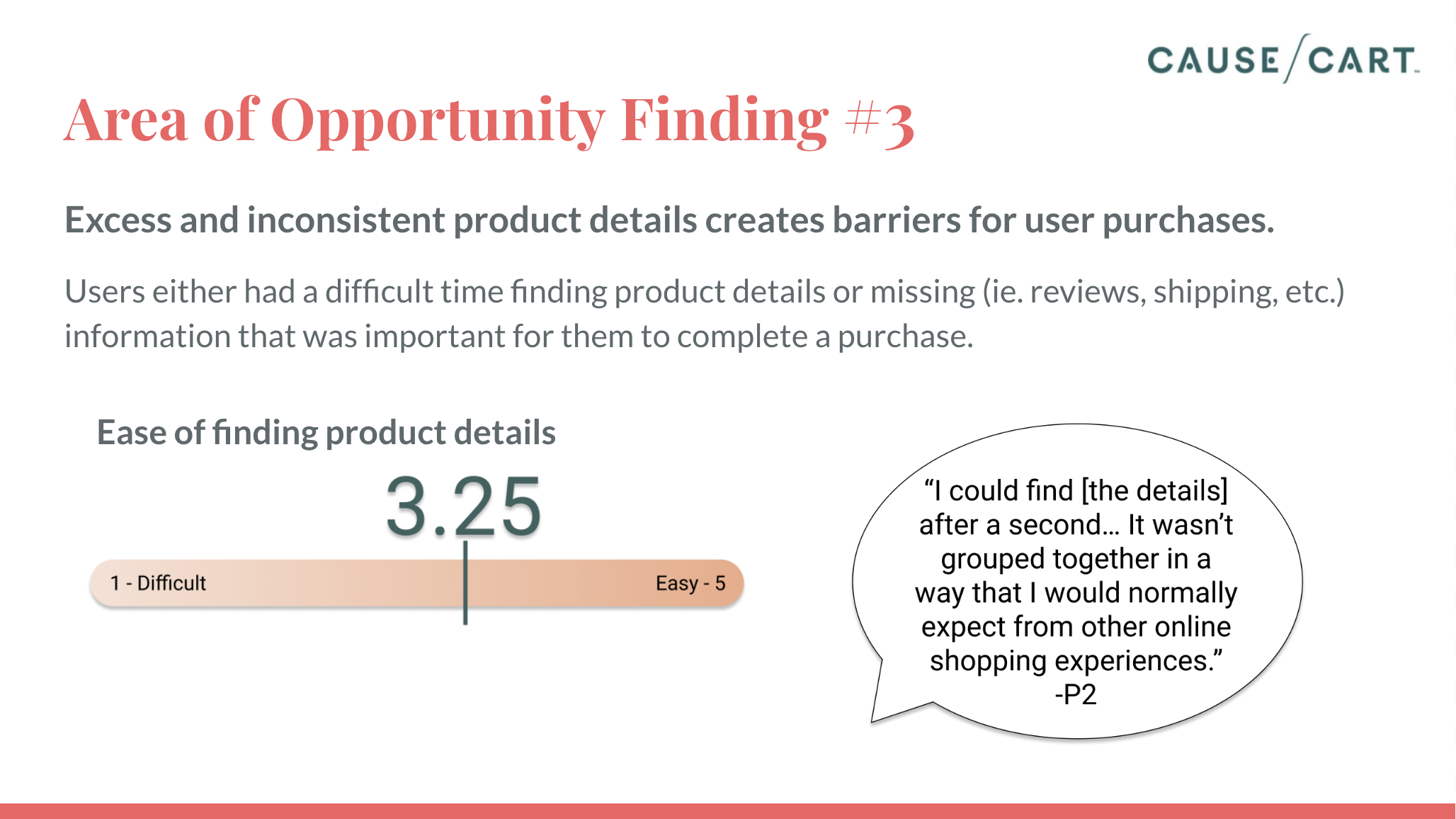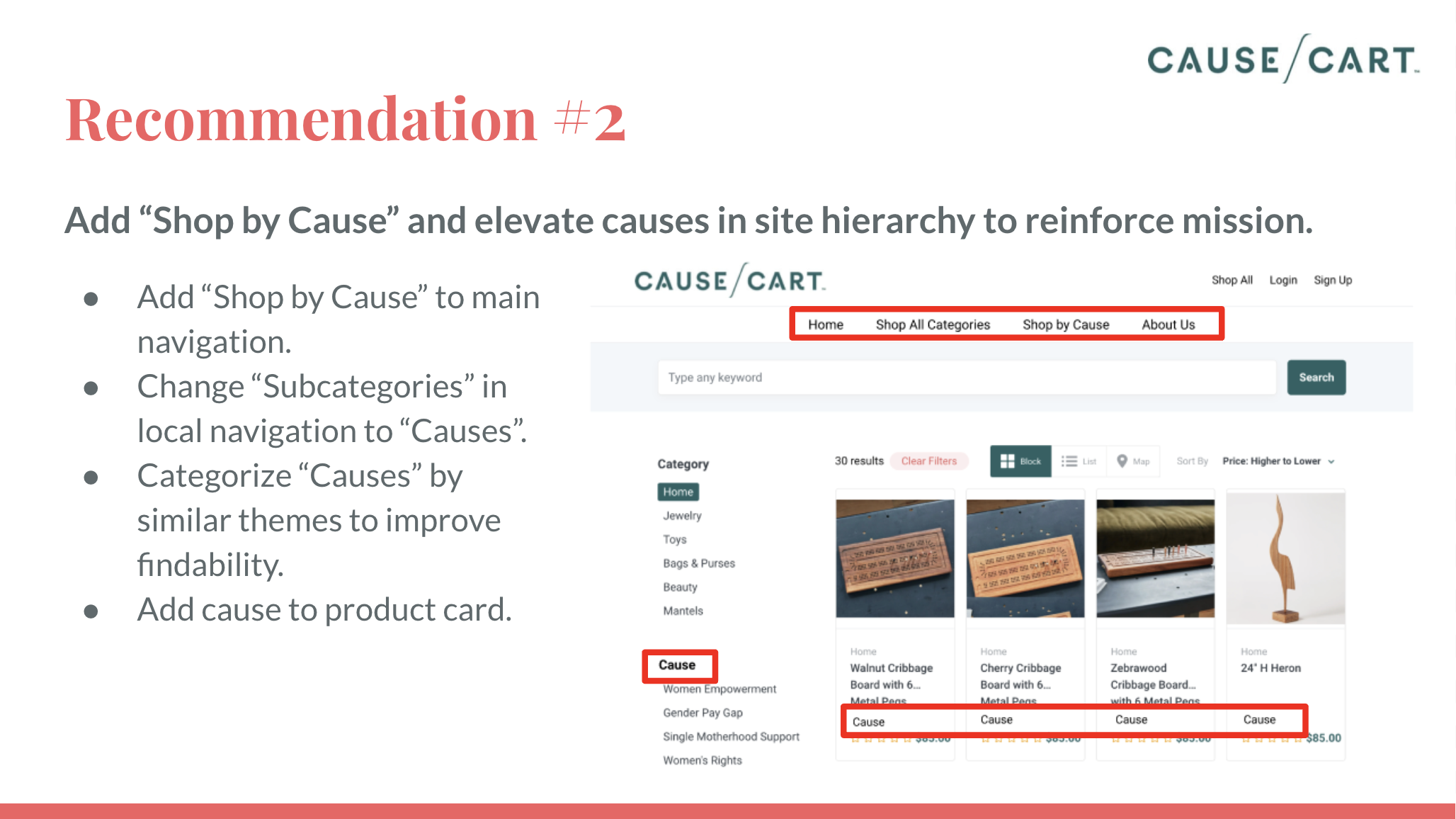Cause-Cart Usability Evaluation & Report
Cause-Cart is an ecommerce platform that seeks to facilitate a consciously-minded community by connecting sellers and buyers through sustainable and ethical online purchasing transactions. As one of the participants in the usability test said, “it’s like a sustainable Etsy.”
The Project
Users are looking for ways to make a positive social and/or environmental impact with their purchases without sacrificing convenience. An evaluation was completed on the platform to:
Gain insight into consumer understanding of Cause-Cart’s value proposition.
Identify how usable those consumers felt the site was for easy and convenient online shopping.
Methods:
Affinity Diagramming
Evaluation Planning
Evaluative Research
Heuristic Analysis
Remote Moderated Research
Think-aloud protocol
Usability testing
Tools:
Adobe Photoshop Express
Figma
Google Docs
Google Sheets
Google Slides
Zoom
Marketplace leader
Cause-Cart is on a mission to be the marketplace leader for ethical and sustainable online shopping. To ensure long term growth, their site needs to appeal and build trust with consumers who want to make more responsible and sustainable purchases.
Evaluation of the Cause-Cart site revealed usability issues for consumers that are critical to the success of the marketplace.
Understanding Users
Cause-Cart appeals to consumers who want to make a positive social and/or environmental impact with their purchases without sacrificing convenience. Within this category, there are two main user groups Cause-Cart was interested in focusing on for evaluating their ecommerce platform.
Primary users - Millennials (born between 1981-1996) and Gen X (born between 1965-1980). These two generations are more established in life with more expendable income. Cause-Cart is interested in these two demographic groups as part of their initial growth.
Secondary users - Gen Z (born between 1997-2012). This group is younger, and is critical to the long term success of Cause-Cart.
Participant generations
9 participants for the evaluation were selected based on if they indicated that they shop online and if they care about ethical and/or sustainable shopping practices.
Participants concern about the well being of future generations
Evaluation
To evaluate the usability of the Cause-Cart site, the Design Team first conducted a heuristic analysis on the Cause-Cart website using Jakob’s Ten Usability Heuristics. This analysis was used to develop hypotheses about usability findings that participants may uncover during evaluation testing.
Based on our hypotheses, the Design Team established 4 evaluation goals for the remote moderated research with the 9 participants.
During the usability evaluation, we asked each participant to complete 6 key tasks using the think-aloud protocol.
As a Design Team, we began analysis and synthesis on the data we collected during the usability evaluation. First, we separated the findings based on the tasks we asked participants to complete. Second, we created an affinity diagram to find common themes for each task.
Notes from Each Participants Usability Test Before Synthesis
Findings & Recommendations
Overall, the findings showed that the Cause-Cart site appeals to users as a conventional ecommerce platform. However, the areas of opportunity focused on elevating the causes supported on the marketplace. According to one participant, “It’s currently functioning, but there are a couple of advancements that could make it really seamless”
The Findings & Recommendations Report identified 4 high priority items, which included wireframes showing the recommended changes.
The report also included an appendix with the full heuristic analysis completed by the Design Team.
Implementing these recommended changes will not only make it easier and convenient for consumers to purchase products that make a social and/or environmental impact - it will also elevate Cause-Cart
Next Steps
I would want to dive deeper with the client to explore ways that design could help to increase seller participation. How could they appeal to more sellers to increase the number of products available on their site? How could they encourage more buyers to leave product reviews?









